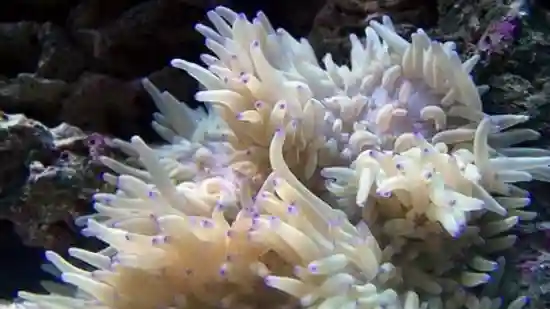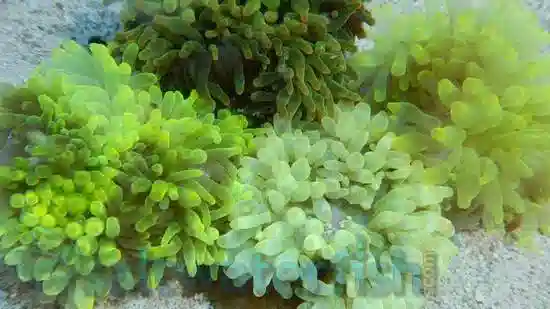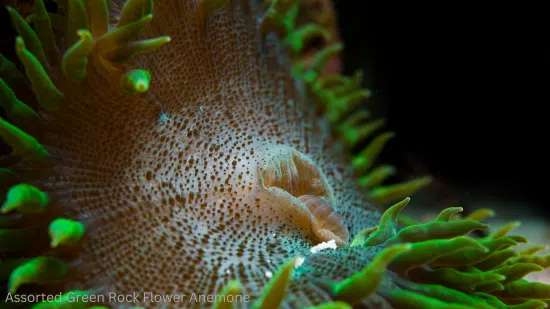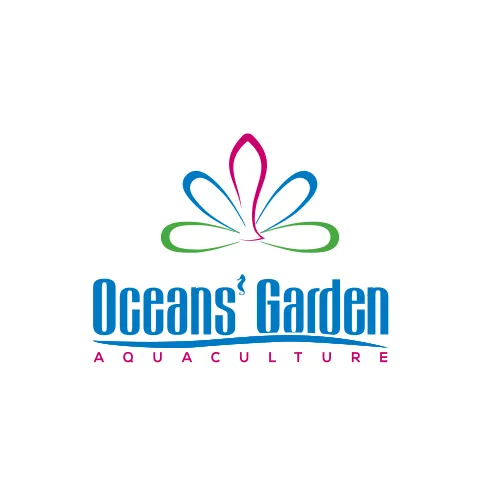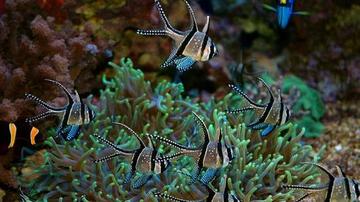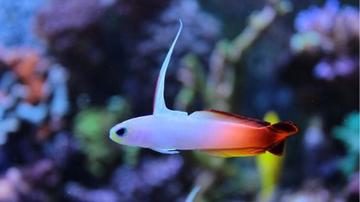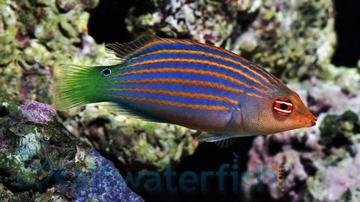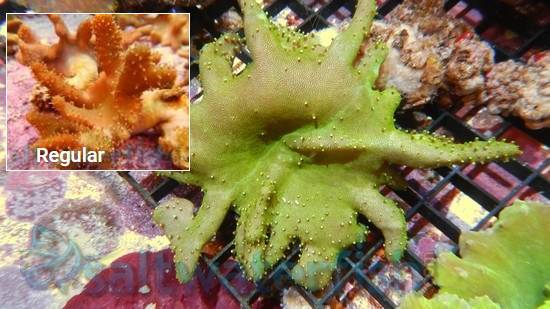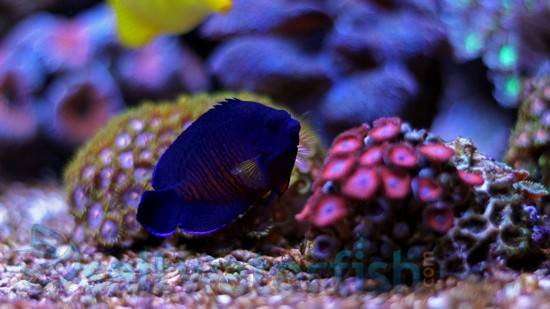Bubble Tip Anemone: Green - Eastern Asia
Entacmaea quadricolor
(0 Reviews)
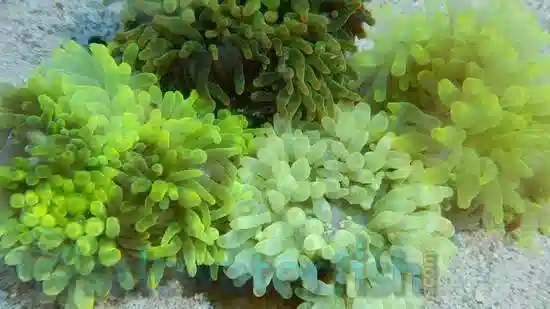
Bubble Tip Anemone: Green - Eastern Asia
Entacmaea quadricolor
(0 Reviews)
{{ item.name }}
Size: {{ item.extra_field_3 }}
${{ getFormattedPrice(item.saleprice) }} ${{ getFormattedPrice(item.price) }}
To join the waiting list, click here
Free Shipping
With
$199.00
or more in Marine Life.
More details...
Bubble Tip Anemone: Green - Eastern Asia Care Facts
| Care Level: | Easy |
|---|---|
| Temperament: | Semi-Aggressive |
| Diet: | Carnivore |
| Reef Safe: | Yes |
| Minimum Tank Size: | 30 Gallons |
| Max Size: | |
| Lighting: | High |
| Placement: | Any |
| Waterflow: | Moderate |
The Bubble Tip Anemone, Entacmaea quadricolor, can stretch its sweeper tentacles to capture food. It has the ability to sting other anemones and corals, therefore keep these aforementioned organisms away from the anemone. It requires strong illumination supplied by LED, or intense florescent lighting of at least 6 watts per gallon. The Bubble Tip Anemone should be kept in a tank with plenty of space, as it intends to grow up to 12 inches across in the aquarium. To maintain its vibrant color, it should be fed with vitamin enriched food, that helps in maintaining a long-lasting color. The tentacles are covered by numerous stinging cells called cnidocytes, which darts tiny hairpin-like structures into prey when contact is made, which then inject venom into the victim. While human skin is too thick to penetrate, they can cause discomfort if they come in contact with open wounds, so please handle with care.
The Green Bubble Tip Anemone (Entacmaea quadricolor): A Beautiful Addition to Saltwater Aquariums
The mesmerizing allure of the Green Bubble Tip Anemone (Entacmaea quadricolor) has made it a highly sought-after species among saltwater aquarium enthusiasts. With its captivating green coloration and intriguing behavior, this anemone adds an elegant touch to marine tanks. In this article, we will delve into various aspects of the Green Bubble Tip Anemone, including its habitat, compatibility, size, diet, aquaculture potential, stinging cells, and symbiotic relationships with other marine life.
Habitat and Distribution
The Green Bubble Tip Anemone thrives in the warm waters of the Indo-Pacific region, encompassing the Red Sea and the western to central Pacific Ocean. Its natural habitat includes shallow reefs where it attaches to surfaces like rocks and coral rubble. This anemone's adaptability to a wide geographical range makes it a captivating addition to saltwater aquariums around the world.
Reef-Safe Considerations
While the Green Bubble Tip Anemone is generally considered reef-safe, caution is advised when placing it in a reef tank alongside delicate corals. Due to their potential to move and sting, careful observation of their behavior and positioning is essential to ensure a harmonious coexistence with neighboring corals.
Size, Lifespan, and Diet
Green Bubble Tip Anemones exhibit a range of sizes, with some growing up to 12 inches (30 cm) in diameter or even larger. With proper care, they can live for several years in a well-maintained aquarium. Their carnivorous nature is evident in their diet, which includes small fish, shrimp, and plankton. In a home aquarium, they can be nourished with various meaty foods such as live or frozen brine shrimp, mysis shrimp, and small fish or shrimp pieces.
Aquaculture and Sustainability
The Green Bubble Tip Anemone's popularity in the aquarium trade has led to efforts in breeding and propagation through aquaculture. While some specimens are still collected from the wild, the availability of captive-bred anemones helps alleviate the impact on natural populations and promotes a more sustainable hobby.
Stinging Cells and Handling
Like all anemones, the Green Bubble Tip Anemone possesses specialized stinging cells called nematocysts, which serve both for capturing prey and defending against threats. Care should be taken when handling these anemones, as their stinging cells can vary in potency, and some individuals may deliver a more intense sting than others.
Symbiotic Relationships and Tank Mates
One of the most intriguing aspects of the Green Bubble Tip Anemone is its symbiotic relationship with certain clownfish species. In the wild, clownfish find refuge among the anemone's tentacles, receiving protection in return for food and nutrients. This symbiosis adds both beauty and behavioral interest to a saltwater aquarium. Additionally, compatible tank mates include cleaner shrimp, firefish, royal gramma, and certain small wrasses, all of which enhance the diversity and vibrancy of the tank.
Choosing the Green Bubble Tip Anemone from Saltwater Fish
The Green Bubble Tip Anemone (Entacmaea quadricolor) is a stunning and captivating addition to saltwater aquariums. Its vibrant green coloration, symbiotic relationships, and unique behavior make it a sought-after choice for marine enthusiasts. By creating a suitable environment and providing proper care, aquarists can enjoy the elegance and wonder of these remarkable anemones in their marine havens.
Reviewed by: Ed Jenkins on April 21, 2025
Reviewed by: Michael Biere on April 6, 2025
Looks great and has assimilated and attached to the rock nicely. Nice size & color anemone. My existing clowns have already been snuggling up inside
Reviewed by: Fran Galasso on March 20, 2025
Bubble tip looked great. Nice color and larger than expected.
Reviewed by: Brent Roberson on March 4, 2025
Clown fish found there home as soon as this was added to tank
Reviewed by: Rick Matzke on March 3, 2025
Reviewed by: Lisa Brothers on Jan. 6, 2025
Looks great, arrived healthy a well packed, has been eating and thriving in my tank.
Reviewed by: Nicholas Chambers on Jan. 2, 2025
Decent size for price good find
Reviewed by: Ricky Hardee on Nov. 14, 2024
Pleasantly suprised at the health and especially size. Very pretty
Reviewed by: Brian Ciske on Nov. 11, 2024
Beautiful anemone.
Reviewed by: Maria Robles on Nov. 10, 2024
Great anemone
Reviewed by: Gary Sparks on Aug. 11, 2024
Amazing. He didn’t do well at first and I thought he had died after a few days. But I moved him and he came back stronger and more beautiful.
Reviewed by: William Brooks on July 18, 2024
Reviewed by: Joshua Pritchett on July 4, 2024
Reviewed by: Jason Brown on June 17, 2024
Reviewed by: F A Rodriguez on May 27, 2024
Reviewed by: Mingxuan Wang on May 5, 2024
Has already formed a relationship with a clown
Reviewed by: Monica Sandridge on April 15, 2024
Looks very bright and doing well.
Reviewed by: Shaun Huddleston on April 10, 2024
Bigger than expected. Attached to rock right away and is very happy. Will purchase corals here again in future.
Reviewed by: Jason Richer on April 3, 2024
Reviewed by: Wilfredo Castillo on March 26, 2024
Great paired with a clownfish
Reviewed by: Carrie Smith on March 14, 2024
This is my third one I’ve bought and took me a while to finally have him settle down in one spot. Guess he just needed me to stop trying to move him. He is now got his firm grasp where he wants to be and seems happy. Can’t wait for him to grow so the can host my clownfish.
Reviewed by: Dale Pichelmayer on March 13, 2024
Both look amazing and the cinnamon clowns have hosted.
Reviewed by: Andrew Hayes on Jan. 8, 2024
Reviewed by: Robert Stokes on Dec. 27, 2023
Reviewed by: Crystal Herrin on Dec. 6, 2023
Great looking bubble tip
Reviewed by: Taylor Muncy on Dec. 5, 2023
Reviewed by: William Nesselrotte on Dec. 5, 2023
Great addition to my aquarium and a Nemo immediately attached to it and protects it
Reviewed by: Julio Jay on Dec. 4, 2023
Reviewed by: Lynn Adams on Nov. 27, 2023
Came in good shape, bigger than expected.
Reviewed by: Patrick Hoover on Nov. 26, 2023
Reviewed by: Thomas C Hillertz on Nov. 26, 2023
Beautiful
Reviewed by: Scott Trautman on Nov. 15, 2023
Awesome!!!
Reviewed by: Neil Tournoux on Oct. 22, 2023
Reviewed by: Devin Hayek on Oct. 15, 2023
Reviewed by: Debbie Konechney on Oct. 12, 2023
Reviewed by: Debbie Konechney on Sept. 19, 2023
Reviewed by: Jean-Paul Haddad on Aug. 20, 2023
Reviewed by: Andrew Zeigler on Aug. 14, 2023
Reviewed by: Debbie Konechney on July 13, 2023
Reviewed by: Tim Corrie on July 3, 2023



